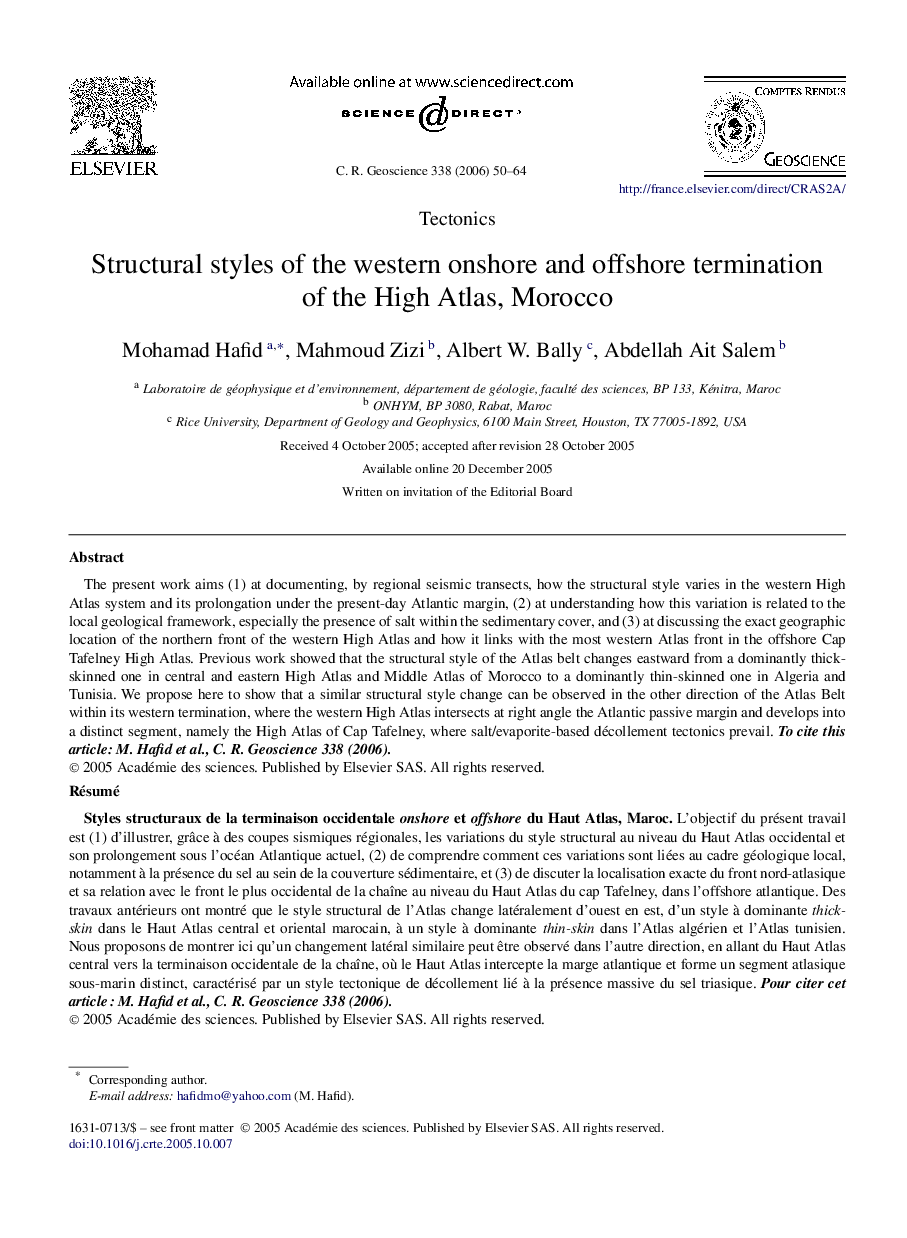| Article ID | Journal | Published Year | Pages | File Type |
|---|---|---|---|---|
| 4462975 | Comptes Rendus Geoscience | 2006 | 15 Pages |
The present work aims (1) at documenting, by regional seismic transects, how the structural style varies in the western High Atlas system and its prolongation under the present-day Atlantic margin, (2) at understanding how this variation is related to the local geological framework, especially the presence of salt within the sedimentary cover, and (3) at discussing the exact geographic location of the northern front of the western High Atlas and how it links with the most western Atlas front in the offshore Cap Tafelney High Atlas. Previous work showed that the structural style of the Atlas belt changes eastward from a dominantly thick-skinned one in central and eastern High Atlas and Middle Atlas of Morocco to a dominantly thin-skinned one in Algeria and Tunisia. We propose here to show that a similar structural style change can be observed in the other direction of the Atlas Belt within its western termination, where the western High Atlas intersects at right angle the Atlantic passive margin and develops into a distinct segment, namely the High Atlas of Cap Tafelney, where salt/evaporite-based décollement tectonics prevail. To cite this article: M. Hafid et al., C. R. Geoscience 338 (2006).
RésuméL'objectif du présent travail est (1) d'illustrer, grâce à des coupes sismiques régionales, les variations du style structural au niveau du Haut Atlas occidental et son prolongement sous l'océan Atlantique actuel, (2) de comprendre comment ces variations sont liées au cadre géologique local, notamment à la présence du sel au sein de la couverture sédimentaire, et (3) de discuter la localisation exacte du front nord-atlasique et sa relation avec le front le plus occidental de la chaîne au niveau du Haut Atlas du cap Tafelney, dans l'offshore atlantique. Des travaux antérieurs ont montré que le style structural de l'Atlas change latéralement d'ouest en est, d'un style à dominante thick-skin dans le Haut Atlas central et oriental marocain, à un style à dominante thin-skin dans l'Atlas algérien et l'Atlas tunisien. Nous proposons de montrer ici qu'un changement latéral similaire peut être observé dans l'autre direction, en allant du Haut Atlas central vers la terminaison occidentale de la chaîne, où le Haut Atlas intercepte la marge atlantique et forme un segment atlasique sous-marin distinct, caractérisé par un style tectonique de décollement lié à la présence massive du sel triasique. Pour citer cet article : M. Hafid et al., C. R. Geoscience 338 (2006).
